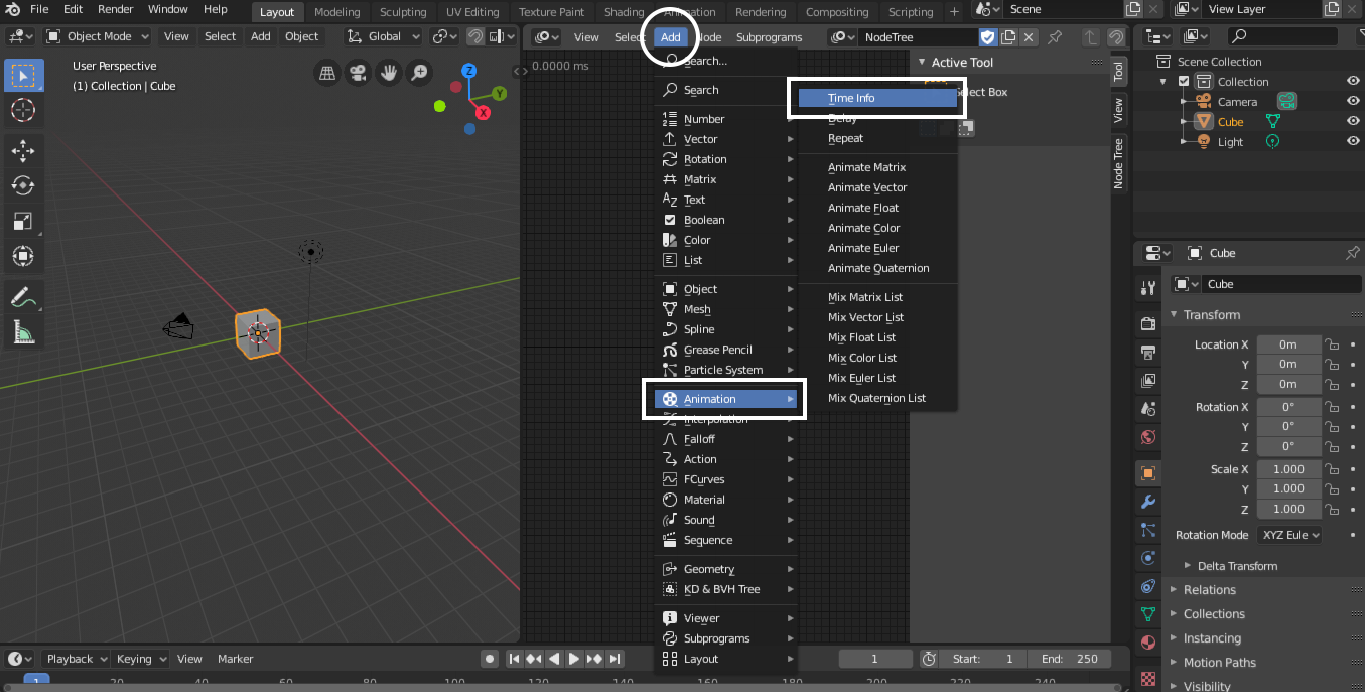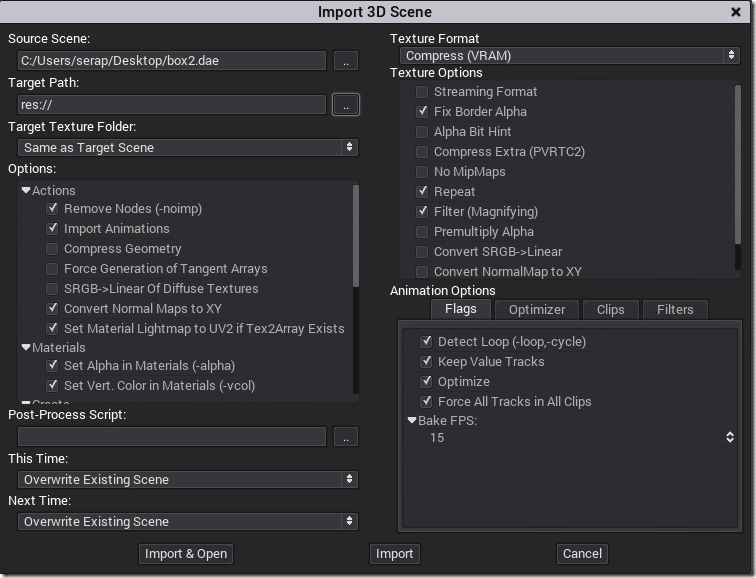

There is no granular way to operate on attributes directly, detached from the entire geometry. A node gets an entire geometry in, and outputs an entire geometry. How to pass attributes directly from one node to another?Īt the moment each geometry node operates on the entire geometry. This overall concept was only briefly presented and still need to be explored further and formally approved. A node that reads from a cache (VDB, Alembic, etc.) should behave the same way as a solver node. Without having the re-evaluate the simulation for every frame.Ī live simulation or a baked cache are interchangeable. You can simulate one frame, freeze, and still see how the rest of the tree will work animated. Even if the simulated data cannot be edited, freezing the simulation allows for performance improvements. Distribute hair, comb it, add more complexity via nodes, simulate them and add more nodes.

#Blender 3d animation nodes how to animate force manual
Any nodes leading to the checkpoint cannot be changed without invalidating the manual tweaks.įor simulation systems, like hair, this is also desirable. The geometry created up to that point is baked and can be edited directly in edit mode. At that point, the artist could go to edit mode, delete some points, move others around, and then use Geometry Nodes again to instance objects.įor this we introduce the concept of checkpoints, a place (node) in the node tree that can be frozen. For example, an initial point distribution can be created using Geometry Nodes, then frozen. Sometimes artists need to use procedural tools, manually tweak the work, and then have more procedural passes. How to mix nodes edit mode and more nodes? View Layer overview of solvers dependencies. Their order is defined in the geometry-node trees though. In a View Layer level users will be able to inspect (read-only) the dependency between the different solver systems and eventual circular dependencies. This will allow any object outside the Geometry Nodes system to influence multiple solvers.īecause there is a dependency of solver evaluation depending on how they are connected in the node trees, it is important to display an overview of their relations. This way, multiple geometries can be solved together, each interacting with each other in the same solver (e.g., different pieces of cloth colliding among themselves).Ĭolliders and force fields will still be defined in the object level. The same data-block can be used in different Geometry Nodes trees. While some solvers can support a single node with inputs and outputs, other solvers will have multiple input and output sockets.Ī solver node will point to a separate data-block.

The solver nodes get geometry inputs and outputs, so it can be transformed with further nodes, or even connected to a different solver afterwards. The simulation solvers will be integrated in the pipeline at the Geometry Nodes level. How to integrate simulation with geometry nodes? They picked the topics to work on, updated its latest designs, and once ready, presented them for further debate to a wider audience ( Andy Goralczyk, Brecht Van Lommel, Pablo Vazquez, Simon Thommes, Ton Roosendaal). The workshop was organized by Dalai Felinto and Jacques Lucke. Attribute Processor presentation and discussions. To help wrap this up and prepare for Blender 3.0, part of the team gathered in Amsterdam for a nodes workshop from June 22 to 25. This time the target was an improved material pipeline, curves, volumes and designing a system to pass attributes more directly. Then you could pick al that geometry and animate it with animation nodes.The Geometry Nodes project has just finished its third 2-month cycle.

To achieve that effect you will to create by hand that geometry (separating pieces from a cylinder and assign them a new origin point one by one. As far as I know on animation nodes they rotate from its center. If you wacht the video you´ll se that the bricks rotate from its base. We don´t have the ability to specify the origin points whe rotating polygons inside of a mesh. Regarding the animation from 2:12 onwards there is huge problem to do this procedurally with animation nodes. The problem is that if you replicate that element or basic rig you will have to offset keyframes manually. Which is what mograph from c4D is all about.įor example to create the ilusion of a cable growing from sections that pledge, you can do it with a curve modifier and some animation. The basic stuff could be done with modifiers and armatures but the problem is that we don´t have a proper way to replicated and offset the animations of those basic pieces. Regarding that video you posted those things are hardly achievable with blender. Welll I´m starting to consider such thing. There is a good guy to do stuff about!, check his motion work out! Man you rock!, you should start making motion graphics tutorials with it…


 0 kommentar(er)
0 kommentar(er)
